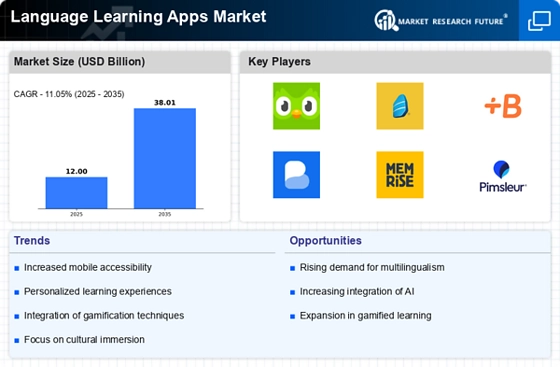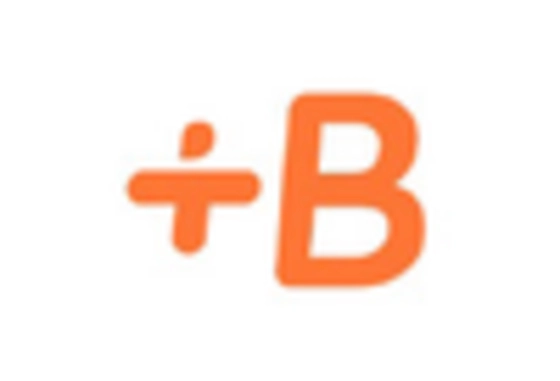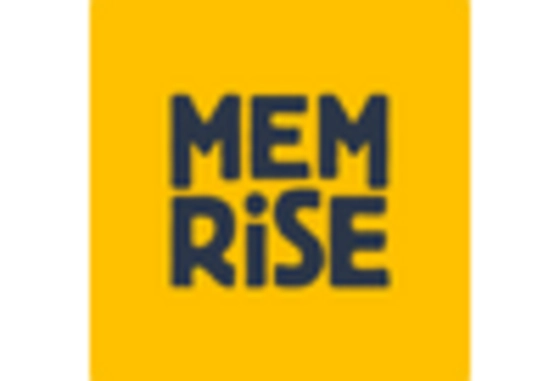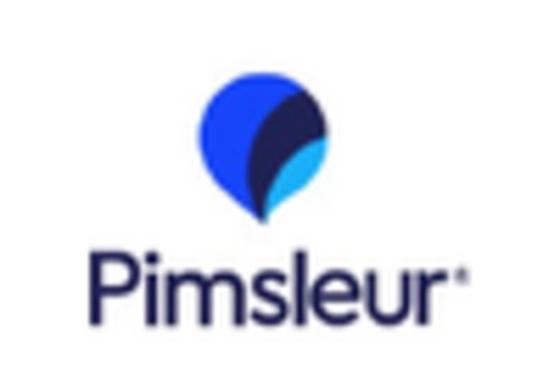Shift Towards Self-Directed Learning
The shift towards self-directed learning is reshaping the Language Learning Apps Market. More learners are opting for flexible, self-paced learning solutions that fit their busy lifestyles. This trend is evident in the increasing popularity of mobile applications that allow users to learn at their own convenience. The rise of online communities and forums also supports this shift, as learners can share resources and experiences. As a result, the Language Learning Apps Market is likely to see continued growth, as more individuals embrace the autonomy and personalization that self-directed learning offers.
Growing Interest in Cultural Exchange
The growing interest in cultural exchange and The Language Learning Apps Industry. As people become more aware of the benefits of understanding different cultures, the desire to learn new languages has surged. This cultural curiosity is often fueled by social media and travel, where individuals seek to engage with others in their native languages. Language learning applications that promote cultural immersion and real-life conversational practice are particularly appealing. This trend suggests that the Language Learning Apps Market will continue to thrive as users seek to enhance their cultural competence alongside their language skills.
Rising Demand for Language Proficiency
The increasing demand for language proficiency in various sectors, including business, education, and travel, drives the Language Learning Apps Market. As companies expand internationally, employees are often required to communicate in multiple languages. This trend is reflected in the growing number of language learners, with estimates suggesting that over 1.5 billion people are currently learning a new language. The Language Learning Apps Market is poised to benefit from this trend, as individuals seek convenient and effective solutions to enhance their language skills. Furthermore, educational institutions are incorporating language learning into their curricula, further propelling the demand for innovative language learning applications.
Increased Accessibility and Affordability
The increased accessibility and affordability of smartphones and internet services have significantly impacted the Language Learning Apps Market. With mobile devices becoming ubiquitous, individuals from diverse backgrounds can access language learning resources at their fingertips. This democratization of language education is evident in the rising number of downloads for language learning applications, which reached over 500 million in recent years. Moreover, many applications offer free or low-cost subscription models, making language learning more attainable for a broader audience. This trend is likely to continue, as more users recognize the value of language skills in personal and professional development.
Technological Advancements in Learning Tools
Technological advancements play a pivotal role in shaping the Language Learning Apps Market. The integration of artificial intelligence, machine learning, and augmented reality into language learning applications enhances user engagement and effectiveness. For instance, AI-driven personalized learning paths can adapt to individual user needs, making the learning process more efficient. The market is witnessing a surge in applications that utilize speech recognition technology, allowing users to practice pronunciation and receive instant feedback. This technological evolution not only attracts new users but also retains existing ones, thereby contributing to the overall growth of the Language Learning Apps Market.

















Leave a Comment